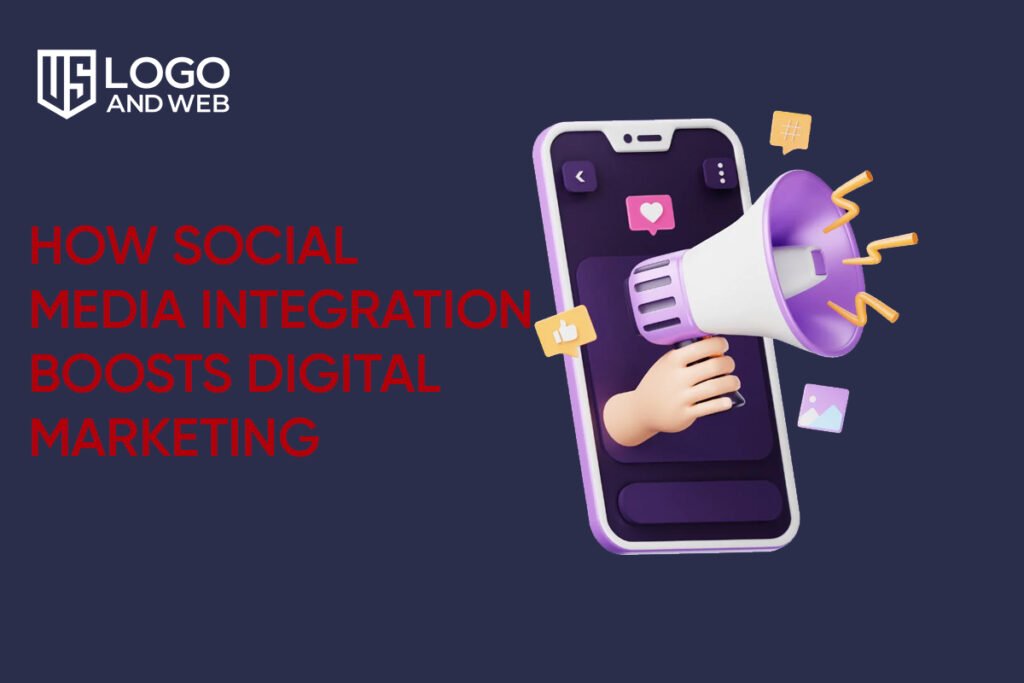If you’ve ever wondered why some businesses dominate your feed while others disappear into the void, the answer is simple: smart social media integration. Think of it like mixing the perfect playlist—every platform plays its own tune, but when synced together, they create a rhythm your audience can’t ignore. Digital marketing strategies today aren’t complete without weaving social media directly into the fabric of websites, apps, and customer experiences.
I’ve worked with brands that went from being nearly invisible online to becoming audience favorites just by connecting their websites with social media feeds, login options, and sharing buttons. And here’s the kicker—you don’t need a massive budget to pull this off. You just need to know the right tools, the right touchpoints, and a clear strategy.
Why Social Media Integration Is a Game-Changer
Social media integration is more than just embedding a Twitter feed or slapping a Facebook button on your homepage. It’s about creating seamless experiences for your audience. When done right, it connects your digital marketing efforts with the platforms people already love.The benefits of social media integration are clear: higher engagement, smoother user experiences, and a stronger brand presence. Whether you’re a small ecommerce store or a growing app, the ability to plug your business into social platforms gives you access to more eyeballs and, more importantly, more trust. Businesses that pair this with social media marketing see even faster results.
How to Integrate Social Media with Your Website
Your website is your digital home, and social media plugins are the welcome mats. Adding social media sharing buttons makes it easy for readers to amplify your content. Embedding social media feeds on your website can also make your brand feel more alive and up-to-date.
For beginners, social media integration tools like widgets and plugins are straightforward. You don’t need to be a developer to add an Instagram feed or install social media sharing widgets. These small steps create a loop where your site feeds your social presence, and your social channels feed back into your site
Simplifying Access with Social Media Login
We’ve all been there—staring at a signup form, debating if it’s worth the effort. Enter social media login integration. With just one click, users can sign in using platforms like Facebook, Google, or LinkedIn.
This single sign-on (SSO) process not only improves user experience but also encourages more signups. For app developers and ecommerce businesses, social media login for apps can significantly reduce cart abandonment and increase customer loyalty.
Going Beyond Basics with API Integration
Social media API integration is where things get interesting. APIs allow websites, apps, and social platforms to “talk” to each other. This is how social media automation, content scheduling, and cross-platform integration become possible.
For instance, social media and CRM integration ensures your sales team knows exactly what your audience is engaging with. Similarly, ecommerce businesses can sync social posts with product catalogs, creating smoother paths from discovery to purchase.
Driving Engagement with Sharing Widgets and Feeds
Adding social media sharing widgets isn’t just a tech upgrade—it’s a community-building move. People love content that’s easy to share, and they love seeing their own social feeds come alive on different platforms.
Embedding social media feeds on a website also builds authenticity. Instead of static pages, visitors see real-time conversations, reviews, and customer interactions. It’s proof that your brand is active, social, and approachable.
Social Media Integration for Businesses and Ecommerce
Social media platform integration is vital for businesses that want to stay competitive. For ecommerce in particular, linking social profiles directly with storefronts can increase visibility and trust. Think product tags on Instagram or shoppable posts on Facebook.The best platforms also offer automation and analytics. This way, businesses can see what works, adjust campaigns on the fly, and keep content consistent across channels. When combined with local SEO strategies, social integration can dramatically improve both reach and conversions.
Best Practices for a Smart Integration Strateg
To get the most out of social media integration, businesses need a clear plan. Here are some best practices:
- Keep it simple: Don’t overload your website with too many widgets.
- Stay consistent: Align your messaging across platforms.
- Measure results: Use analytics to track what’s working.
- Think mobile-first: Most users access social content from their phones.
A thoughtful social media integration strategy balances functionality with user experience. Remember, it’s not about using every tool available—it’s about choosing the ones that fit your brand and audience best.
Frequently Asked Questions
What are the benefits of social media integration?
It improves engagement, strengthens brand visibility, and creates seamless user experiences by connecting websites, apps, and social platforms.
How do I integrate social media with my website?
You can use social media plugins, sharing buttons, feed embedding, or login integration tools that connect your site to major platforms.
What are the best social media integration platforms?
Popular options include tools like Hootsuite, Buffer, and Zapier for automation, and native plugins for direct website integration.
Is social media integration useful for ecommerce?
Yes, it helps showcase products on social channels, simplifies customer login, and drives purchases through shoppable posts and ads.
Final Reflections
Social media integration isn’t just a marketing buzzword—it’s the bridge between your brand and your audience. By weaving in tools like social media login, plugins, sharing widgets, and API integration, you create experiences that feel natural and rewarding for your customers.
Brands that embrace integration stand out, not just because they’re visible, but because they’re accessible. If you’re ready to elevate your digital presence, take these strategies to heart and start building smarter connections today. And if you’re looking for real-world expertise and practical support, US Logo and Web is here to guide you every step of the way.

